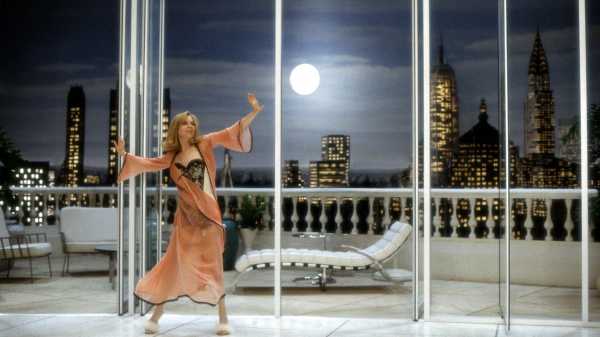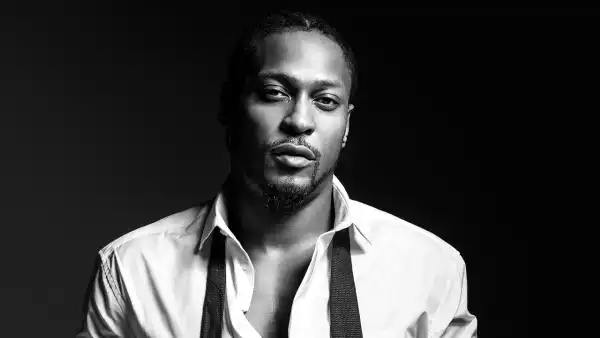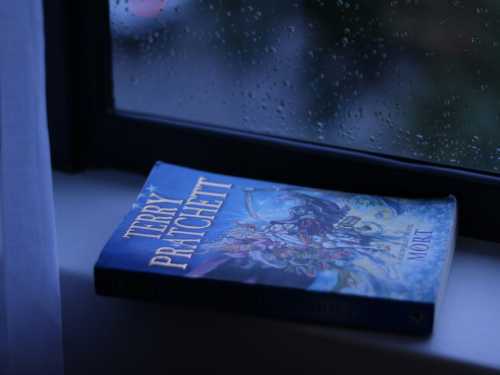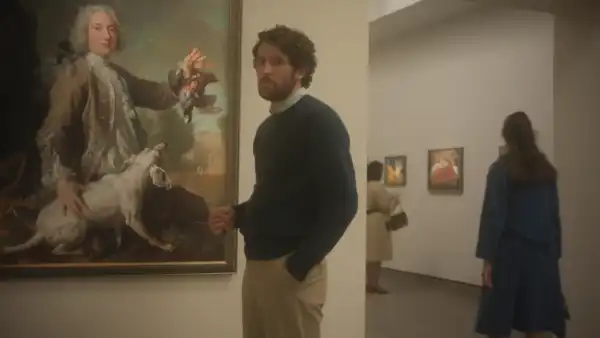
I have high hopes for this Friday’s release of “Ant-Man and the Wasp: Quantumania,” because its director, Peyton Reed, has directed one of the most freely imaginative of recent superhero movies, the first “Ant-Man” film, from 2015. As distinctive as that big-budget, studio-tailored franchise film is, it hardly holds a candle in inspiration or thematic depth to several of the movies that he made earlier in his career. His first three features are among the most mercurial dashes from the starting gates of any Hollywood director of the time.
Reed was already a young veteran of television and music videos when he made his first feature, “Bring It On,” released in 2000, an instant classic of high-school cheerleading. It owes a lot to the script, by Jessica Bendinger, which spotlights the ferocity of teen competition and the grim ubiquity of cultural appropriation on which the successes of mainstream (i.e., predominantly white) culture runs. But Reed adds a sharp sense of style and a keenly balanced tone, tinged with melodrama, which showcase the range and depth of its most prominent young actors, Kirsten Dunst and Gabrielle Union.
Yet there’s little in “Bring It On” that foreshadows the controlled explosion of comprehensive creative energy in Reed’s second feature, “Down With Love,” from 2003. It stands as a landmark of cinematic style—and of the substance that’s inherent to its style. “Down with Love” is a film in the cheapest of genres, namely, parody—it’s a pastiche of the tones and elements of three Doris Day/Rock Hudson comedies of the late nineteen-fifties and early sixties, but it’s also an improvement on them. (Needless to say, that’s a rare achievement.) The originals were directed by skilled but unoriginal directors who put their stars in the spotlight and kept the comedy bright and broad. In “Down with Love,” Reed makes a retro live-action cartoon that channels the spirit and the ideas of the greatest Hollywood comedy director of the Day/Hudson era, Frank Tashlin, featuring hair-trigger physical comedy, exaggerated stylization, whimsical camerawork, and a view of the transformative power of mass media.
Renée Zellweger plays an author named Barbara Novak, whose book—also titled “Down with Love”—offers a multi-step program for liberating women from the lopsided demands of romantic relationships with men. Her program primes women to enter the workforce and become financially independent, and to pursue sexual relations solely for pleasure, unhitched from emotional bonds, strictly “à la carte.” Her story is part of the selling point—first-time author, outside the publishing world, a librarian from a small town in Maine—and her editor, Vikki Hiller (Sarah Paulson), seeks to score a publicity coup: a cover story in the leading men’s magazine, Know, by its leading investigative journalist, a big-time, 007-style, British émigré swinger named Catcher Block (Ewan McGregor), “ladies’ man, man’s man, man about town.”
But, with his busy sociosexual schedule, Catcher can’t make time for Barbara. Instead, Vikki scores an even greater coup—getting Judy Garland to sing “Down with Love” (a real song, by Harold Arlen and E. Y. Harburg, from 1937) on “The Ed Sullivan Show”—which turns the book into a best-seller and makes Barbara a celebrity. When she publicly calls out the serial user Catcher, he decides to investigate Barbara, in the hope of proving her a hypocrite who would all too readily fall in love with a man—and he’s going to be that man. Meanwhile, Vikki and the hyper-neurotic publisher of Know, Peter MacMannus (David Hyde Pierce, channelling Tony Randall, who also has a cameo—one of his last screen roles), fall for each other, but the insecure Peter, something of a forty-year-old virgin, turns to his best employee and best friend, Catcher, for advice on surefire seduction, with antic results.
Reed presents this clattery, amped-up game of ruses and deceptions in the form of highly decorative and giddily stylized hyper-unrealism. (The film uses impossibly fake New York geography in a pointed, purposeful way.) The entire city seems candy-coated and color-coördinated—the movie’s palette of décor and costumes runs through blaring primary colors and chiming secondary ones, set among gleaming chrome, hard-edged furnishings, and high-tech modernistic accoutrements to rival the electro-sardonic inconveniences of Jacques Tati’s satirical anti-modern universe. At the center of this dazzling dynamism of industrial design, the movie’s central quartet, of Barbara and Vikki and Catcher and Peter, stand out as exemplars of style and flair. The comedic action is seemingly choreographed with mechanized precision timing in sequences featuring elevators and remote-control gizmos. It’s also literally choreographed, by way of virtually dance-like maneuvers in offices and apartments, juking and synchronized sashaying, which are set to a hep jazz-and-Martini-like space-age score. (Its choral “ba-doo-ba-doo-wah” interjections, once heard, are inextricable earworms.)
This high-toned style is further displayed in the trim and sharp-outlined fashions pressed and starched to the stiffness of armor, the hair sprayed and baked and pomaded to a helmet-like solidity. The cast matches this style with glitzily formal, gleamingly faux-casual manners, which allow the characters to maintain similarly opaque and impenetrable façades, sealing off private lives from public personae. This glossily artificial stylization of personality most clearly embodies the substance of the movie’s style and brings to life Reed’s big idea—the power and the fragility of social masks, the painful effort of sustaining them, and the ordeal of their collapse. “Down with Love” is a comedy of the pre-sixties, of the age before the Age of Aquarius, when culture and science seemed to triumph definitively over nature and human nature, when liberal ideals of rational perfectibility and traditional ones of order converged to sustain those façades until a new generation saw through their deceptions and delusions. (There’s even a winking revision of one of the most famous scenes of romantic movie lies, from “Johnny Guitar.”) The movie culminates in a virtuosic duet for actress and director: Barbara bursts the entire charade with a three-minute monologue—delivered by Zellweger and filmed by Reed in a single high-wire take—which, in effect, condenses an extraordinary and elaborate miniseries’ worth of backstory into a single cream-pie confection that virtually smashes into the screen. With its intellectual slapstick of precisely calibrated creative disorder, the film heralds an era of emotional liberation and self-revelation, in style and substance and movie manners and methods alike.
That new era, the modern times of freedom and its uninhibited exhibitions, is the subject of Reed’s follow-up, the 2006 comedic melodrama “The Break-Up,” an altogether more volatile blend of genres. Its tone is unstable; it’s the story of a young Chicago couple who meet obnoxious, live together, and fall apart—while remaining together in the same spacious condo, for financial reasons, until they can sell it. Vince Vaughn plays Gary Grobowski, a benignly aggressive motormouth who earns his living with his gift of gab, as the guide on a tour bus that’s the main attraction of the small business he co-owns with his two brothers, the industriously nerdy Dennis (Vincent D’Onofrio) and the crude, unfortunately named Lupus (Cole Hauser). Jennifer Aniston plays Brooke Meyers, who manages an art gallery owned by the haughty, unfiltered Marilyn Dean (Judy Davis). Brooke is a college-educated woman from a bourgeois family with deep-rooted ties to powerful institutions; Gary is a man from a working-class family. The couple’s emotional and physical bond seems powerful; the action is centered on the daily routines of a relationship and the cataclysmic results when they break down.
Gary is a guy’s guy—sports and video games—and Brooke is one of the culturati, but their busy social life, centered on a bowling team and trivia night, appears warm and teeming. The hidden fault lines give way after an apocalyptic dinner in their apartment for the two families, where Gary’s unwillingness to help out with preparation and cleanup is amplified by his unease with Brooke’s family and, in particular, his coldness toward Brooke’s cheerfully loopy, music-besotted brother, Richard (John Michael Higgins), who organizes the guests in a hearty but cheesy a-cappella sing-along that sets Gary aglow with the barely repressed anger of his own hypermasculine self-image.
As a result, Brooke and Gary’s two-year relationship blows up in a single night (the action veers from antic comedy to rage with shocking speed), and more or less the rest of the film involves their efforts to make new lives apart while living together, maintaining their habits and their friendships while no longer functioning as a couple. There’s a comedic undercurrent even to scenes of fury (as when, during one argument with Brooke, Gary makes reference to Michelangelo’s “Sixteenth Chapel”). But, after the romantic apocalypse, most of the comedic relief comes from secondary characters whose antics grate alongside the spewing and the seething with which the collapsed relationship trails off.
Since seeing “The Break-Up” at the time of its release, I’ve considered it to be something like a young-adult version of a Douglas Sirk film, a melodrama of piercing intensity and overwhelming emotion that’s tweaked to entice teen-comedy viewers. (If there’s one Sirkian element that Reed doesn’t develop, it’s the cultural one—the movie could have made much more of Brooke’s emotional and intellectual relationship with art and artists.) But I’m not sure that the veneer of goofy humor serves mainly as a selling point; rather, it serves to punctuate the horrors of the breakup, to render the emotional torments bearable to watch. I’ve always considered Aniston’s comedic performance style to be inherently dramatic, perched on the edge of tears, and here the pain with which she invests the frenetic complications of the somewhat comedic artifice is raw and fierce—her personality, her dignity, are abraded all the more by Gary’s aggressive, heedless bluster.
The movie is rendered all the more anguished by the out-of-synch calculations that motivate Brooke and Gary. She’s stringently self-aware and clearly in the habit of analyzing herself; her attunement to her own feelings and to those of others gives rise to a seemingly infinite regress from sincerity to scheming, from impulse to strategy, one that leads her to doubt her own motives, her own goals, her own endgame, her very identity. By contrast, Gary is ego unhinged and unquestioned, especially by himself. Whatever he’d been holding in check, barely, in his relationship with Brooke comes ferociously to the fore, and the cruelty is the point. Vaughn has moved in right-wing circles (he has called himself both a conservative and a libertarian), and—though actors play roles that differ drastically from their personal inclinations—here he throws himself with terrifying force into traditional masculinism and the infliction of pain to own the lib who left him.
In “The Break-Up,” Reed channels the precise timing and exquisite style of “Down with Love” into dramatic performance, and into images that emphasize its power and its subtleties. For all the overt displays of agony and rage, the outbursts of accusation and the pathos of confession, the movie’s emotional core is one of furious, burning stillness. The exchange of stares when Brooke catches Gary in a moment that embarrasses him emotionally—as if he sees himself for the first time, reflected in her pained and disappointed gaze—is a moment of truth that’s like the dark and impenetrable center of the movie’s flames and flares. This is a story of personae, both Brooke’s keen self-awareness and Gary’s oblivious self-image. Leaving behind the formalities of 1962, Reed finds the social world of the new millennium, with its freedom and its florid personal expression, to be nonetheless peopled with fabricated and fashioned identities, both resplendent and burdened with crafted personalities.
Reed followed “The Break-Up” with an unfortunate misfire, “Yes Man” (2008), which pursued a similar theme—Jim Carrey plays a socially inhibited man who changes his life by following a program to say “yes” to everything. (Both the comedy and the drama fall flat, and there’s neither style nor substance to match Reed’s preceding films.) Although Reed’s first “Ant-Man” film was among the best that the genre has to offer, it came at the expense of yet another extraordinary story of the crafting of personae, its power and its price: he had been scheduled to direct “The Fifth Beatle,” a bio-pic about Brian Epstein, the group’s manager and visionary impresario. Speaking of superheroes. ♦
Sourse: newyorker.com






